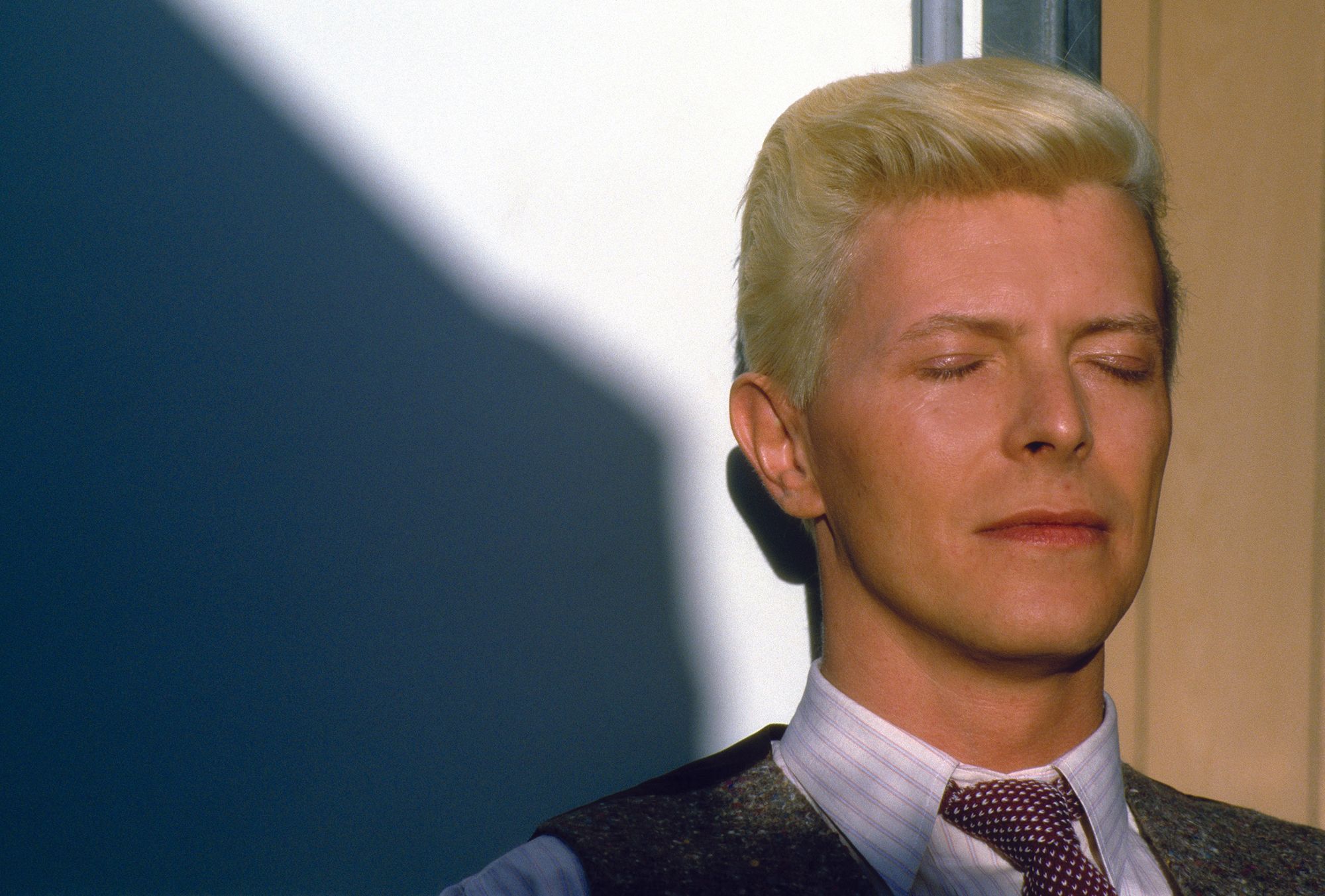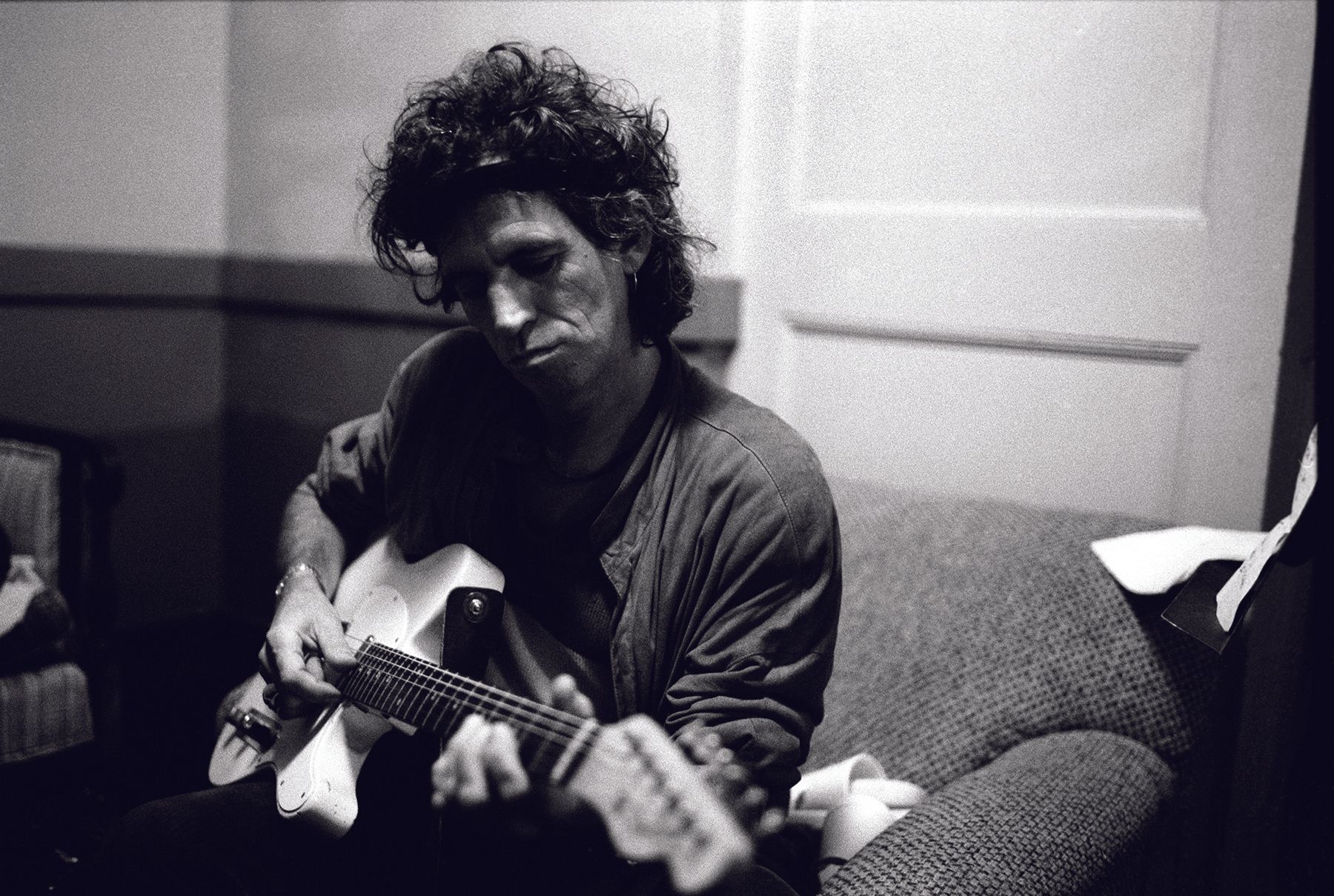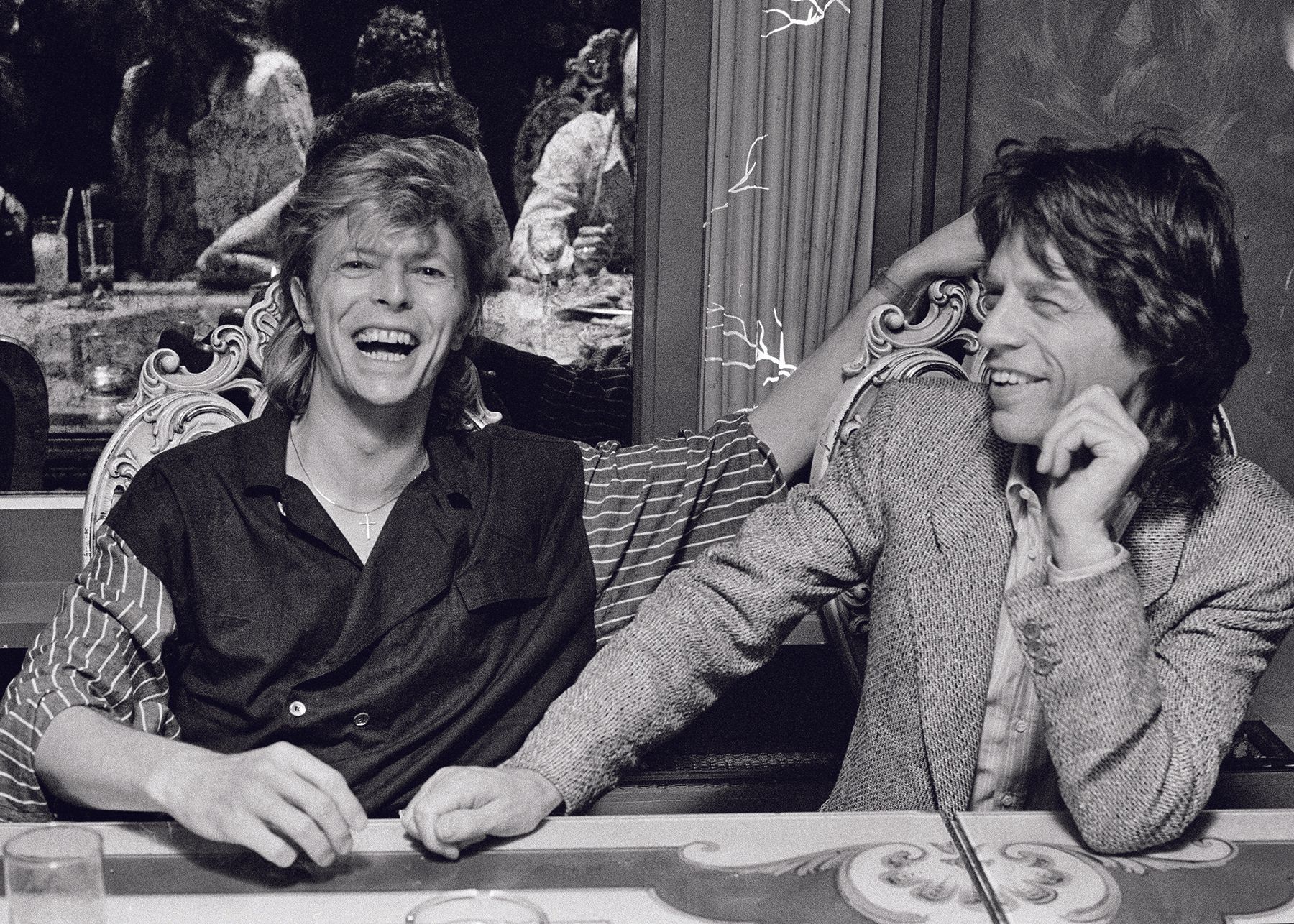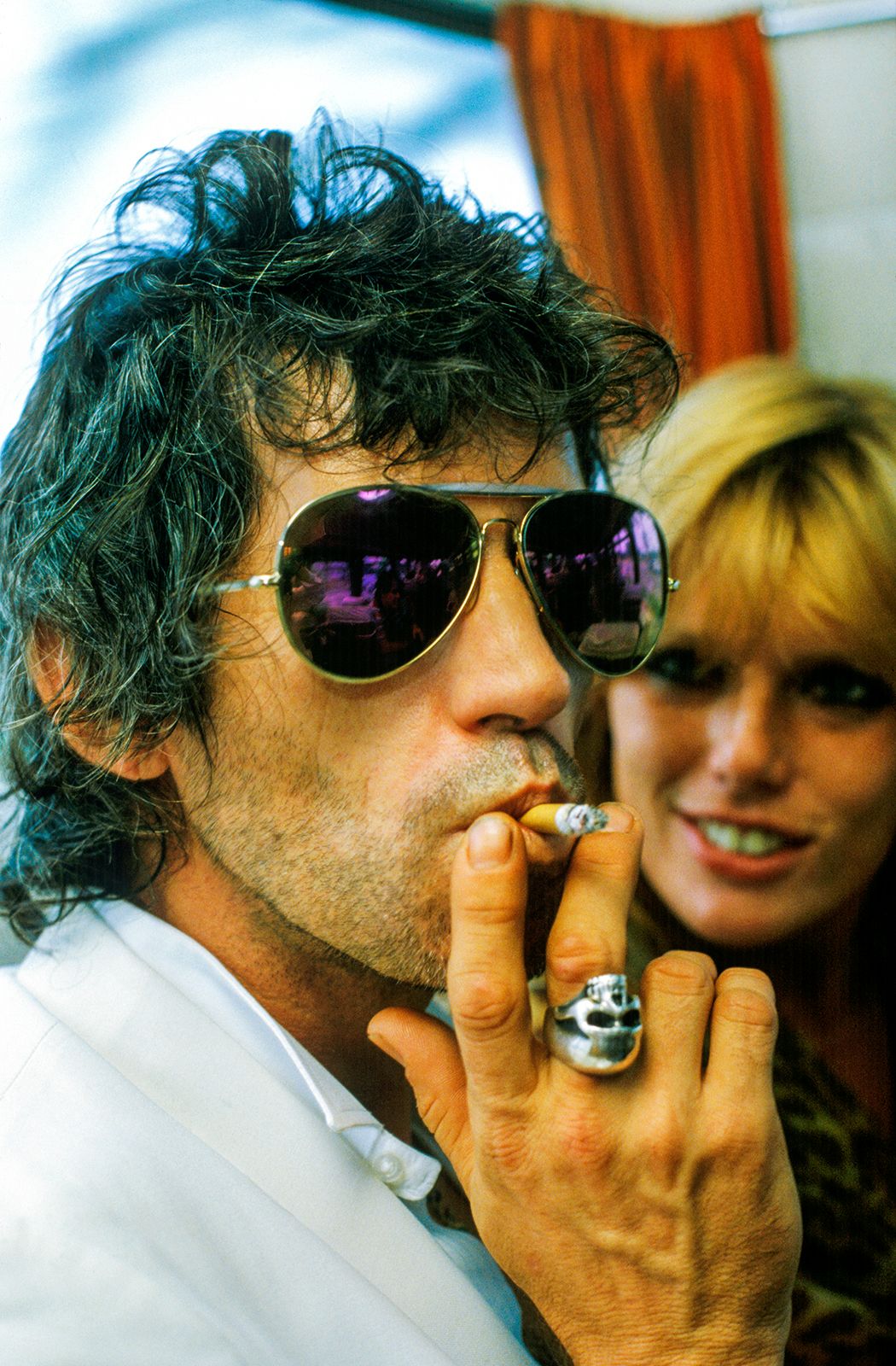
There is the age-old adage that many are called but few are chosen, and the amount of photographers on the planet who would likely have given their proverbial right arm to have toured the world with the likes of David Bowie, The Rolling Stones and Queen are somewhat legion. However, one man can lay claim to having been up-close-and-personal with all three of these monolithic icons of musical history, capturing some of the most memorable moments in the history of popular culture – Queen at Live Aid, check, David Bowie in front of the Berlin wall, check, The Stones practically everywhere, check. Suffice to say that the curriculum vitae of Irish-born photographer Denis O’Regan is pretty much one without contemporary parallel, which is no doubt precisely the reason he was named artist in residence at The Royal Albert Hall in 2021. Culture Collective caught up with the legend of candid rock portraiture at his new gallery in West London in order to discuss his latest online exhibition 69 Days (named thusly to celebrate the photographer's 69th year), and take a deep dive into his memory box. What we discovered inside was evidence that a life of chance meetings and sliding doors synchronicity might just have more to do with the hand of fate than we can possibly imagine.
Where did your passion for photography come from?
It started with the music, not the photography. I was a child when The Beatles came along, and for me that was it. They reimagined everything, and they broke through everything – all the old school singers of the time, Connie Francis, and all of that kind of thing. I made my mother take me to see The Beatles at Hammersmith Odeon when I was nine, so the fascination with music started way before I got my first camera. About 10 years later, I bought my first camera from a friend, for five pounds. It was a Russian Zenit and had nothing on it at all – just shutter speed and aperture; that was your lot. And I just started photographing what I considered being the usual stuff, dew on cobwebs – those sorts of things. Then I started to go to concerts, and with it being the early 70s, there was this big glam rock moment.

I guess Bowie was kind of the zenith of glam rock at that time…
Yeah. When I went to see David Bowie at Hammersmith Odeon on the Ziggy tour, I just thought, oh my God, I've seen something new. But the following night, he announced he was retiring. I didn't know he was just retiring the character, no one did, but I was kind of devastated having just discovered him. But weirdly, it was at that point that all these little things began to happen. I grew up in Barnes where Olympic Studios was, which is where everyone recorded everything, really, and I was working in the newspaper shop across the road. One day, there were all these girls outside the studio, and they said David Bowie was recording what would become Diamond Dogs. I went straight home, got my little camera and came back and waited with them. Then David showed up, and there's a huge irony here, because he got out of the car and I was doing something else, looking around, so I almost missed him coming past me. I took a very quick picture. Then I thought I would wait again. The next day he shows up and two things happened – one is that he obviously remembers me from the day before and comes over and says, you should work for NME, which is what I wound up doing! The other thing was that 10 years later, when I was on tour with him, I was never around when he'd think, well, this would be a good shot, and he'd always go, 'Oh, where's Dennis?' That always hearkened back to me missing him that first day!

How strange that he should be so pivotal in your choice of career…
There were literally lots of these kinds of moments in my life. 1981 was yet another gigantically pivotal moment. I had been shooting professionally for a long time by then and was out with some friends who worked in the music business, and one of them had tickets to The Stones in Detroit. It was an 80,000 people indoor show, and I'd never seen anything like it. As it’s about to start this Amazonian black woman comes in leading in all the photographers to the pit. And my friend Alfred says to me, 'Quick, jump in!' So, I snuck into the line of photographers and she saw me, and was like, 'Oi! You! Out!' But it was actually that small moment that led me to going on tour with The Stones. The following year they came to Europe and I went to shoot one of the warm-up shows in Aberdeen. I’m in the airport lounge, and there she is again. She spots me and says, ‘I remember you – when I threw you out of that show a year ago, you were so polite.’ Anyway, a couple of weeks later this rumour starts circulating that The Stones are going to play The 100 Club. No one really believed it, so people just trickled up. And I said to their press guy, 'If I shoot this for you, could you give more three songs at the first proper Stones show in Rotterdam?' He agreed, and in Rotterdam I meet her again leading me into the show, and I ask 'Who's the official photographer?' She said they didn’t have one, and I just said, ‘I'll do it!’ She said, ‘Well, I couldn't ask you, but since you've asked me, I'll pass it on to the band.’ I remember being in my hotel room that night thinking this is unbelievable – a few days later, and Mick Jagger sits next to me on a commercial flight and we chitchatted. I realised 30 years later that that conversation was my audition.

What did you observe about the relationship between Mick and Keith?
Well, I would say Mr and Mrs – I mean, they were a real married couple. Mick was very much never complain, never explain, and Keith is more what you see is what you get. If Keith gets annoyed, you get to know about it, but if Mick is annoyed, he doesn't really let you know. He will more likely get someone else to let you know. I see a total pacifist in Mick. He doesn’t do confrontation. Keith is sweet, really engaging and a really lovely man. And I was so surprised by that because all you heard about them at the time was druggie this, druggie that. Now, of course, we have all these interviews and documentaries, and we know what they are like, but then people didn't know what any of these stars were like. It was a different world, and I was revealing that world to people who had never ever seen it before.

It’s interesting that there was that mystique around people. It doesn’t exist now. You must have not had a clue what to expect from Bowie…
Yes. Now we all know what he was like – we know he was funny and charming and a gentleman, and all the rest of it. But when I did the 83 tour with him he hadn't toured in five years. In 78 it had been the Thin White Duke period, with the very cold, slicked back look, and I’d seen that show and photographed two of my favourite pictures of him. So, before touring with him, I was expecting this complete enigma. It was kind of the same with The Stones, in that I did not know what to expect – was it going be a drug frenzy? Was it going to very hierarchical, and be like, them and me? But, actually, on tour, you all kind of even out, because it’s the same 20-or-so of you every day everywhere you go. But with David, it was just one person a lot of the time, and I spent much longer with him. I thought he was going to keep me at arm's length, and I was going to be told when I could take a picture. But it was the polar opposite. He was really friendly, sweet and inclusive – a very modest, normal guy, which was the last thing I expected.

Did you have a similar informal audition?
My ‘audition’ with David came early on in The Serious Moonlight Tour in Texas. He would do boxing with a trainer every day, and he asked me to go with him. I’m sure that was him checking out what I was like to be around – was I going to drive him insane? But we got on. I'm easy-going, so that relationship between us worked really well, and as time moved on it was often just him and me together. He was wonderful, very human, very deep and thoughtful, and incredibly well read – he read his way around the world. Obviously, tours can get tense, and we did have a couple of fallings out. I remember once in Japan he lost his rag and told me to get out of his sight, which I thought was very harsh, but as soon as we got to Australia, he arranged a picnic for me and my girlfriend, and drove us out to the countryside to make up for having lost it – I mean, who does that? That is indicative of just how lovely a human being he was. I always remember once being there when he was asked if he had got any regrets, and he'd just said one thing, the drugs – he said that was his one regret, because he lost a chunk of his life. He was totally clean by the time I toured with him, of course. The 70s had been the excess for all these guys, and the 80s was the decade they were all cleaning up, and it had all become big business.

Why were you always drawn to live and candid shots over studio photography?
I was too shy. I hated doing studio sessions. You know, a band would walk in, and they would not want to have their picture taken, and I equally wouldn’t want to take it. What I always wanted to do was focus on them on the stage, which is what they loved as well. I knew exactly what I wanted to do from being a kid, and I had my targets, right? My ambition was to go on tour with the worlds biggest bands – well, good luck with that. But because of these strange moments of synchronicity it’s exactly what I did do. David was always the catalyst, because I was just blown away by him, and I wanted to document him more than anyone on the planet. It was quite similar with Queen, because they were just amazing. I saw them very early on, and I thought if I'm going to tour then that's the band. It's funny because Freddie Mercury was very shy off stage, and very flamboyant and outrageous on stage, and I'm a bit the same. When I'm in social company, I can be great fun, but if I meet someone I've never met, I can clam up. And that has worked against me a few times. I would have loved to work closely with McCartney but when I met him, I found myself very shy around him, and I’m sure he thought I was very boring. I once also sat next to Bono in an airport lounge, and could so very easily have said something, and shown him my work, but nope, not a word. In a way, I suppose I always needed that thing to happen to spark it, or a figure like the woman at The Stones show to lead me into something. Queen, The Stones and Bowie were all things that happened, in a sense –they didn’t really rely on me to make the first move.

What was special about Freddie Mercury?
I shot Freddie all the way through his career. I had photographed Queen from the beginning, all the way to that final tour you see in the image of the helicopter over the crowd. Obviously, he was incredible live, but also difficult to shoot because, of course, it was a manual camera and he was running around like a lunatic. I've actually never seen anyone else who could hold a crowd the way he could do it – he could drill through into these massive crowds and really connect with the audience. I suppose there is always this idea that you laugh someone into bed, you know? Well that's what he used on the audience – get into them, make them laugh, and you've got them. I suppose that's why I'm a photographer, because I am always trying to capture that kind of moment, because otherwise it's totally lost. From a very young age I thought, I go to these things and I can't take everything away with me. It all evaporates unless it’s documented, unless it’s captured.
Images (top to bottom): Freddie, Maine Road, 1986; David Bowie, backstage Australia, 1983; Freddie, Slane Castle, Ireland 1986; Keith Richards, USA, 1988; David & Mick, London 1987; David Bowie, California, 1983; Freddie, Budapest, 1986; Keith Richards, Nice, 1982; All images courtesy of the artist and West Contemporary
69 Days by Denis O'Regan cane be viewed online at West Contemporary where you can also purchase editions. You can visit the exhibition in person at Denis O'Regan Gallery, King Steet until January 1